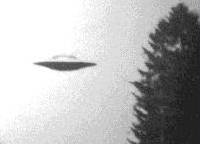Article/Document:
Frank Drake Interview
Contact the movie, Warner Brothers
original source | fair use notice
Summary: In 1960, the astronomer Frank Drake went to West Virginia and ran a two-week experiment using an 85-foot diameter radio telescope: he searched for artificial signals from two, nearby stars. Called "Project Ozma", this was the first modern search for cosmic company and the start of a life-long involvement with SETI for Dr. Drake, who is now the President of the SETI Institute. This is a brief interview with Frank Drake.
In 1960, shortly after getting his degree from Harvard, the astronomer Frank Drake went to West Virginia and ran a two-week experiment using an 85-foot diameter radio telescope: he searched for artificial signals from two, nearby stars. Called "Project Ozma", this was the first modern search for cosmic company and the start of a life-long involvement with SETI for Dr. Drake, who is now the President of the SETI Institute.
How did you devise your famous Drake equation?
In 1961, a meeting was held at the West Virginia observatory where I had conducted Project Ozma. During this meeting, astronomers and physicists discussed approaches to answering the question of our place in the cosmos for the first time. As a kind of "agenda" for this meeting, I proposed a simple equation that collects together all the relevant factors that govern how much intelligent companionship might be spread throughout the starfields of our Galaxy. It is gratifying that this equation has remained useful, and is normally the basis of any discussion about SETI's chances for success.
Are you optimistic about the possibility of life in the universe, especially given the recent theories about life in dark ecosystems?
With the recent results suggesting the possible earlier existence of simple life on Mars, and the chance that undersea life may be found on Europa, we've witnessed a shift in our perceptions about the prevalence of biology. I am sure that life is not a rare occurrence at all, but is as natural throughout the universe as the formation of planets and stars. But it may be hard to find. The chances that some of this life has evolved to the point of intelligence are perhaps greater than previously thought.
What gives you the most hope that life does exist elsewhere? Are you optimistic that we will find evidence of it in the foreseeable future?
Since Project Ozma, nearly four decades ago, just about everything we've learned about the universe has pointed in one direction: we are not so very special. Planets are commonplace, and life may be as well. It seems only reasonable to conclude that intelligent life will also be widespread. The instrumentation of the SETI Institute's Project Phoenix is reckoned to be 100 trillion times more sensitive than what I used for Project Ozma. Such an enormous improvement in the ability of our equipment certainly suggests to me that a detection by SETI might not be far off.
Are you at all religious? Does that have an effect on your work? On your belief that life is (or is not) everywhere?
Most astronomers that I know are no more or less religious than any other group of college-educated folk. Religion is belief, and science requires a different standard of "proof," but the two can and do fill important roles for me and for many people.
Dr. Drake talks about creating the Pioneer plaque with Dr. Carl Sagan:
One of the most exciting projects that I had the pleasure to be involved with together with Carl was the design of the Pioneer 10 plaque, in 1972. We had three weeks to come up with a message that might conceivably be retrieved by extraterrestrials. Was it perfect? No, but it was a challenge and a project that I look back upon fondly. As with so many of his endeavors, Carl was always interested in looking at the "big picture" questions. This particular picture was only 6 by 9 inches, but it has certainly become one of the century's most enduring graphics. Later, we had a chance to construct a much better message in the form of the Voyager record. It was a special treat to work with Carl on this project, too.
Read more articles on this topic:






